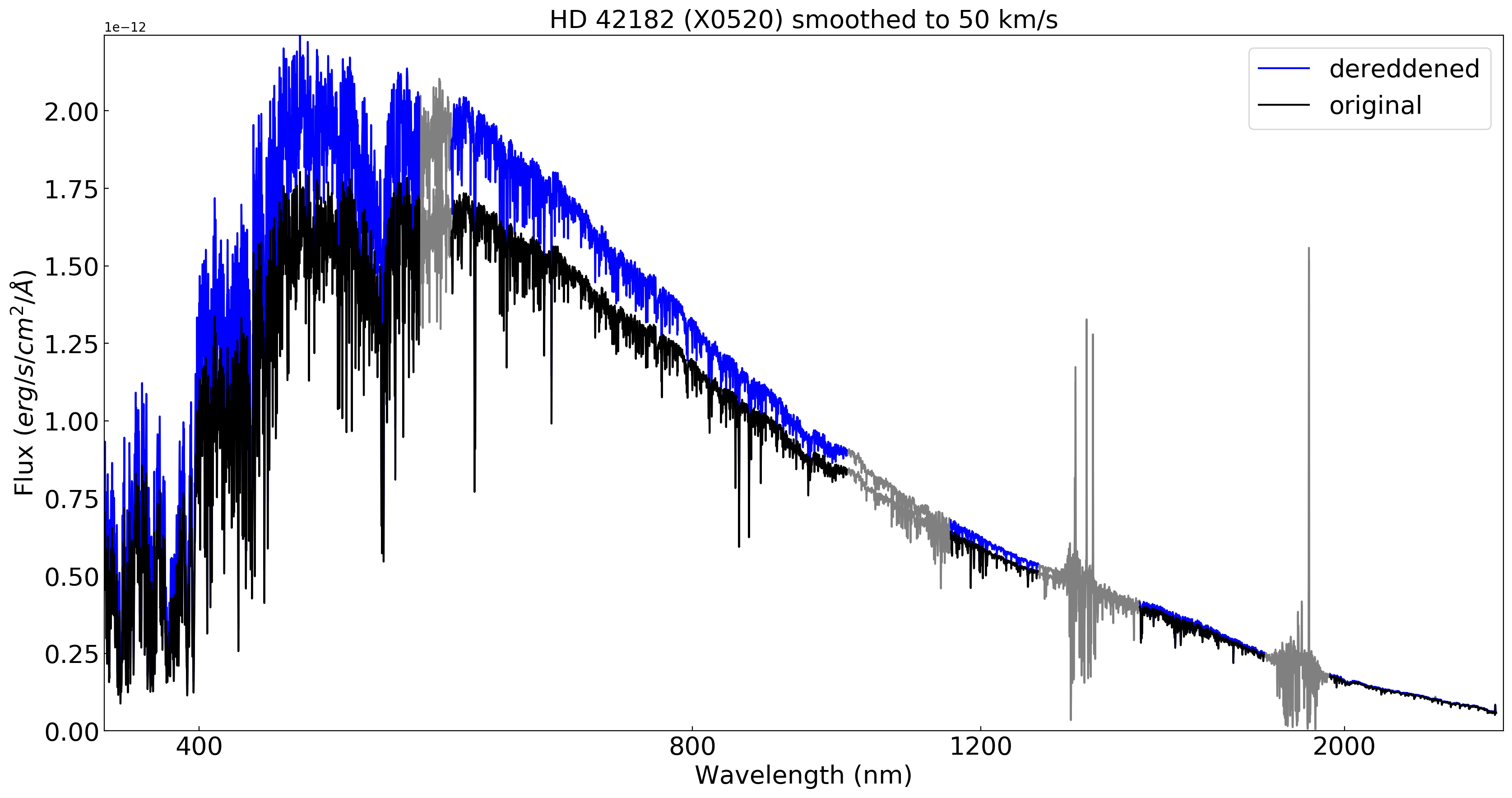
Acknowledgment
Please cite Verro et al. 2022a , when using these data.Data format

- WAVE: Wavelength [in nm]. As the spectra are rest-framed, the wavelength ranges are spectrum-dependent.
- FLUX: Flux spectrum [in erg/s/cm2/Å]
- DEREDDENED FLUX: Flux spectrum [in erg/s/cm2/Å], corrected for Galactic extinction.
- ERR: Error spectrum: [same units as Flux]
Naming examples of DR3 spectra:
- xsl_spectrum_X0000_merged.fits - four column binary table [WAVE, FLUX, FLUX_DR, ERR]
- xsl_spectrum_MD000_merged.fits - new M dwarf spectrum; four column binary table [WAVE, FLUX, FLUX_DR, ERR]
- xsl_spectrum_X0000_merged_scl.fits - spectrum is corrected for galactic dust extinction and flux losses with a spline function; four column binary table [WAVE, FLUX, FLUX_SC, ERR]
- xsl_spectrum_X0000_merged_ncl.fits - spectrum IS NOT corrected for slit flux losses (but IS for galactic extinction, use with caution!); four column binary table [WAVE, FLUX, FLUX_DR, ERR]
- xsl_spectrum_X0000_merged_ncge.fits - spectrum IS NOT corrected for galactic dust extinction (but IS for slit flux losses); three column binary table [WAVE, FLUX, ERR].
- xsl_spectrum_X0000_merged_ncl_ncge.fits - spectrum IS NOT corrected for slit flux losses NOR corrected for galactic dust extinction; three column binary table [WAVE, FLUX, ERR].
The XSL resolution corresponds to σ(v) = 13 km/s in UVB, 11 km/s in VIS and 16 km/s in NIR (sigma, not FWHM). The spectra in the overlap regions are smoothed to the lowest of the resolutions of the two adjacent spectral arms (13 km/s for the UVB/VIS overlap, 16 km/s for the VIS/NIR overlap).
Please see Table C.1 of Verro et al. (2022a) for information about the peculiar, abnormal or deprecated objects.